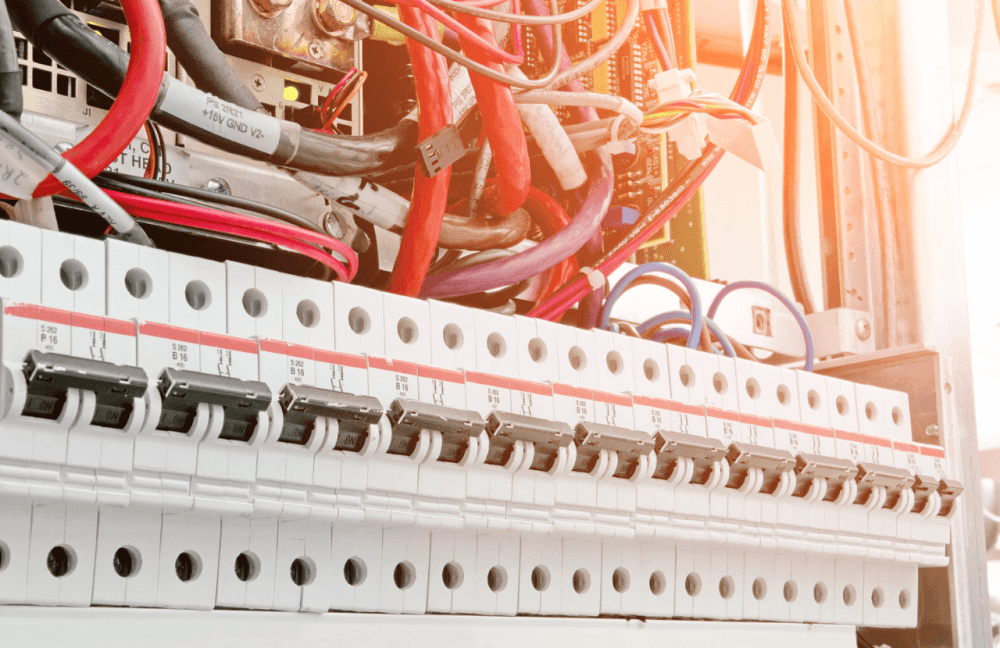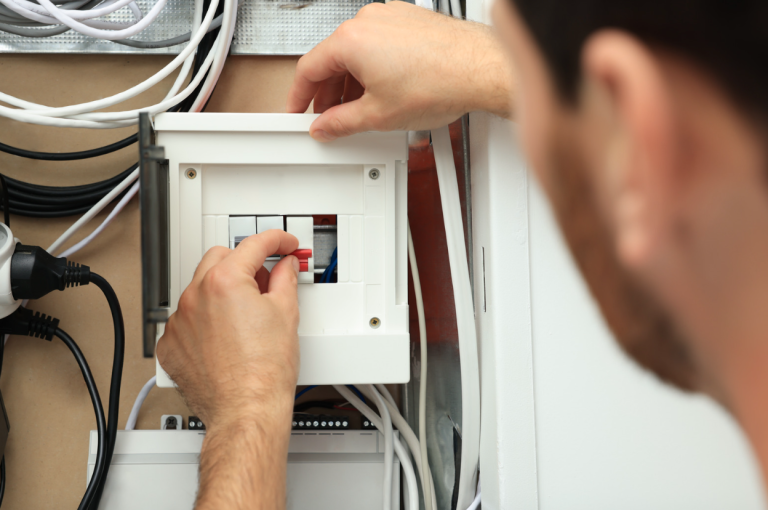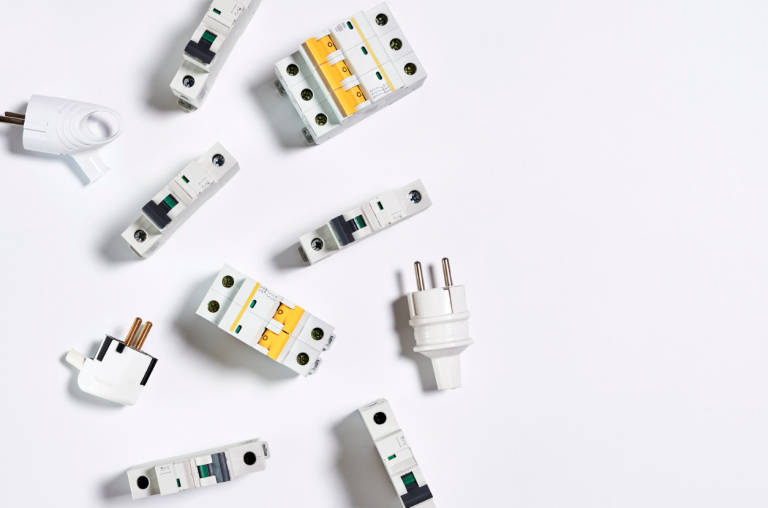What is a Circuit Breaker?

More from the Category
In modern electrical systems, circuit breakers are essential components for maintaining both safety and system integrity. A circuit breaker is a type of automatic electrical switch that protects an electrical circuit from damage caused by overload, short circuits, and faults. But what is a circuit breaker really, and why are circuit breakers so important?
This article aims to explain the technical functions and applications of circuit breakers, while also offering practical guidance for professionals and buyers looking to make informed decisions when selecting components for their electrical systems.
The Basics of Circuit Breakers
A circuit breaker operates by interrupting the electrical current when it detects an abnormality, such as an excessive flow of current or a fault in the system. Once the issue is resolved, the breaker can be manually or automatically reset - which sets it apart from a fuse, which must be replaced once it has blown. This feature makes circuit breakers more cost-effective and easier to maintain.
Without circuit breakers, electrical systems would be vulnerable to severe damage, increased fire risks, and costly downtime. Circuit breakers provide a failsafe mechanism that ensures continuous safety and reliability in the electrical grid.
Circuit breakers are just the start. Check out our full guide to Essential Electronic Components
Circuit Breakers vs Fuses
For many years, fuses were the go-to protection device for electrical systems. While still useful in certain applications, fuses have largely been replaced by circuit breakers for several reasons.
First off, fuses are one-time-use devices, while circuit breakers can be reset and reused, and so they reduce both maintenance costs and downtime. Circuit breakers also offer more precise protection than fuses can because they can be fine-tuned to trip at specific current levels. Circuit breakers typically respond faster to electrical faults than fuses, which reduces the risk of damage to electrical equipment. Finally, when a fuse blows, it must be physically replaced, which can be time-consuming and costly.
Circuit breakers, on the other hand, can be reset with the flip of a switch.
How Does a Circuit Breaker Work?
Generally speaking, a circuit breaker is a switch connected to a system that monitors the flow of electricity. When the breaker detects an electrical anomaly, it trips and disconnects the circuit, effectively stopping the flow of electricity. This action not only protects the electrical devices connected to the circuit but also ensures the safety of people working with the system.
How Circuit Breakers Work: Two Mechanisms
Thermal Protection: A bimetallic strip heats up when too much current flows through the circuit and bends enough to trip the breaker.
Magnetic Protection: A coil within the breaker generates a magnetic field proportional to the current, and in cases of an electrical fault, the increased magnetic force triggers a trip mechanism and breaks the circuit.
The Role of Circuit Breakers in Electrical Safety

The fundamental role of a circuit breaker is to prevent electrical accidents and protect devices from damage. For homes, businesses, and industrial settings alike, circuit breakers provide essential protection that safeguards both people and electrical systems.
In industrial settings, where the electrical load is substantial and the consequences of system failure can be catastrophic, circuit breakers act as the frontline defense against potentially disastrous events like fires or equipment failure.
Circuit Breakers Protect Against:
Electrical Overloads: These occur when the current flowing through a circuit exceeds the safe level and heats the wires to a temperature that can cause fires. Circuit breakers are designed to cut off power before the flashpoint.
Short Circuits: When two wires that should be insulated from each other come into contact, a surge of electricity can occur, and circuit breakers isolate the affected area to prevent damage.
Ground Faults: When electricity escapes to the ground, there is a high risk of electric shock, and a ground fault circuit interrupter (GFCI) breaker will cut off the circuit when it detects current leakage.
Types of Circuit Breakers

The versatility of circuit breakers allows them to be used in a variety of settings, from residential homes to heavy industrial facilities. The type of circuit breaker you select depends on factors such as the operating voltage, current capacity, and environment. Here’s a closer look at the most common types:
Miniature Circuit Breakers (MCB)
MCBs are typically used in low-voltage residential or commercial settings. They provide protection against overloads and short circuits and are compact, making them ideal for small spaces. MCBs are designed to handle currents up to 100 amps and are easily reset, which offers a cost advantage over one-time-use fuses.
Molded Case Circuit Breakers (MCCB)
Designed for larger systems, MCCBs can handle currents of up to 2,500 amps, making them suitable for industrial applications. They provide overload and short circuit protection and are known for their durability and adaptability. MCCBs can also be fine-tuned to trip at specific current levels, offering a level of customization for varying electrical environments.
Residual Current Circuit Breakers (RCCB)
RCCBs detect leakage currents, which can lead to dangerous ground faults. These breakers disconnect the circuit when they sense electricity flowing to the ground, reducing the risk of electrical shock. RCCBs are commonly used in environments where moisture is present, such as kitchens and bathrooms, providing an extra layer of safety.
Air Circuit Breakers (ACB)
Air circuit breakers are frequently used in low-voltage industrial applications. These breakers interrupt the current using compressed air, which extinguishes the arc formed when the circuit is broken. ACBs are preferred for their ability to handle high-current conditions in industrial environments.
Selecting the Right Circuit Breaker
When choosing a circuit breaker, it’s essential to consider factors such as the system’s voltage, the expected electrical load, and the specific needs of the environment.
Key Criteria to Evaluate:
• Current Rating: Defines the maximum current the breaker can carry without tripping, and ensures the breaker is rated for the expected load.
• Breaking Capacity: The maximum fault current the breaker can interrupt. For industrial applications, high breaking capacity is particularly crucial.
• Voltage Rating: Must match the system voltage to ensure effective protection.
• Environmental Factors: Exposure to moisture, extreme temperatures, or corrosive materials. For example, outdoor installations may require specially sealed breakers.
Where to Find Circuit Protection Components
Circuit breakers are a fundamental part of electrical safety, offering protection against a variety of hazards, from overloads to ground faults. Whether you’re a technical professional selecting breakers for an industrial facility or a homeowner choosing protection for your residence, understanding what a circuit breaker does and the different types available is crucial for ensuring safety and efficiency.
And whether you’re looking for circuit breakers, fuses, or other circuit protection components for your next project, Microchip USA can get you what you need. Our team will find you the specific part you need or even manage your entire supply chain. Contact us today!









